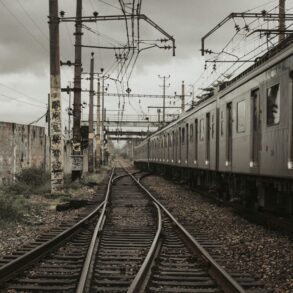picture: United Nations Photo, Flickr
Congolese troops on Monday killed dozens of youths who attacked the airport, a military barracks and the state radio and television headquarters here in the capital, in what appeared to be a failed assault by followers of a disgruntled religious leader,” was reported in the New York Times on 30 December 2013. This kind of news has become the norm to emerge from the Democratic Republic of Congo since the mid 1990s. The historic development of this vast country is extremely complex and has been influenced by a myriad of external forces. By understanding this history, it is possible to put the present tensions into context and to question why such a devastating conflict has remained present in the DR Congo for so long.
Many factors have contributed to the instability in the DR Congo, such as the vast size of the country, its wealth of resources, an unstable transition to independence in the 1960s and autocratic rule. But what separates the Congolese situation from others was the two successive and complex wars which occurred between 1996 and 2003. These conflicts eroded any institutional infrastructure and further entrenched internal cultural divisions. After the country achieved independence from Belgian rule in 1960, there was a brief hope of liberation. Under King Leopold II’s rule, the Congolese people were enslaved and brutally killed in large numbers. But unlike other African states, such as Tanzania (which made a peaceful transition to independence), there was an intense tussle for power between various leaders. Ultimately, after a coup, Joseph Mobutu became the undisputed leader of the DR Congo. He renamed the country Zaire and, as Chris McGreal, the Guardian’s Africa correspondent, explains, Mobutu “cloaked himself in leopard skins and African nationalism, and set about filling his bank accounts while most of those he ruled saw their country crumble around them.”
The impact of Mobutu’s leadership on the Congo cannot be underestimated. Even though ethnic tensions often play a major role in fueling conflicts, in the Congo there are more than 200 ethnic groups but the economic and social conditions of the country arguably played an even greater role in causing civil tensions. The infrastructure of the country disappeared: hospitals, roads and the judicial system did not function in any systemic way and only on a local ad-hoc basis.
Perhaps the turning point for the DR Congo was the Rwandan genocide, when under a Hutu extremist regime 800,000 Tutsis died. The Hutu regime in Rwanda was overthrown, causing a mass exodus of Hutus to eastern Zaire for fear of reprisals. Mobutu supported these Hutu groups, who were organising armed factions to continue fighting the Tutsi leadership in Rwanda. The Rwandan government decided to invade Zaire in 1996, an action that has been described as throwing the Congo into “a tailspin it has yet to recover from.” This ultimately led to the end of Mobutu’s reign—Rwandan-backed rebels and anti-Mobutu groups forced the President to flee the country. Laurent-Desire Kabila became President of the country in 1997 and quickly renamed the country to the Democratic Republic of Congo. At this point, there are two important factors to consider which in some way portray the complex position that the Congo was nestled in during the late 1990s. On the one hand, it was at the mercy of its tiny and internally dysfunctional neighbour, Rwanda. On the other hand, Mobutu and his regime only realised once it was too late both that the world order had changed considerably since the end of the Cold War and that states such as the US and France were not going to uphold foreign regimes to the same extent as before. This meant that the Congolese state was under-prepared to defend itself without external support.
What Gérard Prunier has termed Africa’s World War began when Rwandan and Ugandan rebels rose up to oust Kabila, the President of the Congo. Then, in 1998, Angolan, Zimbabwean and Namibian troops were sent to assist the Congolese government and army. These six countries fought a brutal war—the deadliest since World War II—on Congolese soil, although there is some dispute as to how many people have died due to the conflict. Still, the Economist noted that “over the past 15 years war in the Democratic Republic of Congo has consumed as many as 5 million lives.” All foreign armies left the Congo in 2002, although the east of the country was still effectively controlled by Rwandan militia groups, there has been some signs of this changing over recent months.
Today, the violence in the Congo is mainly based in the east of the country and stems from two rebel groups: the M23 faction, which many analysts say are being supported by the Rwandan government, and the Forces for the Liberation of Rwanda (FDLR). But due to the complete upheaval of the Congolese state and the presence of these militia groups, violent acts are common and can be used as a reaction to political change. But perhaps it is most important to recognise the devastation this country’s people have experienced over the last two decades. War violence, disease epidemics, widespread sexual violence and widespread recruitment of child soldiers have crippled the Congo. The UN High Commission for Refugees notes that there were 2.6 million internally displaced people in the Congo in 2013. Although estimates predict this will decrease in coming years, it still poses major problems for the establishment of a long-term and stable peace. In 2013, the M23 groups declared that they are willing to pursue a political solution, offering some hope for peace in the Congo.
KATE O DONNELL




